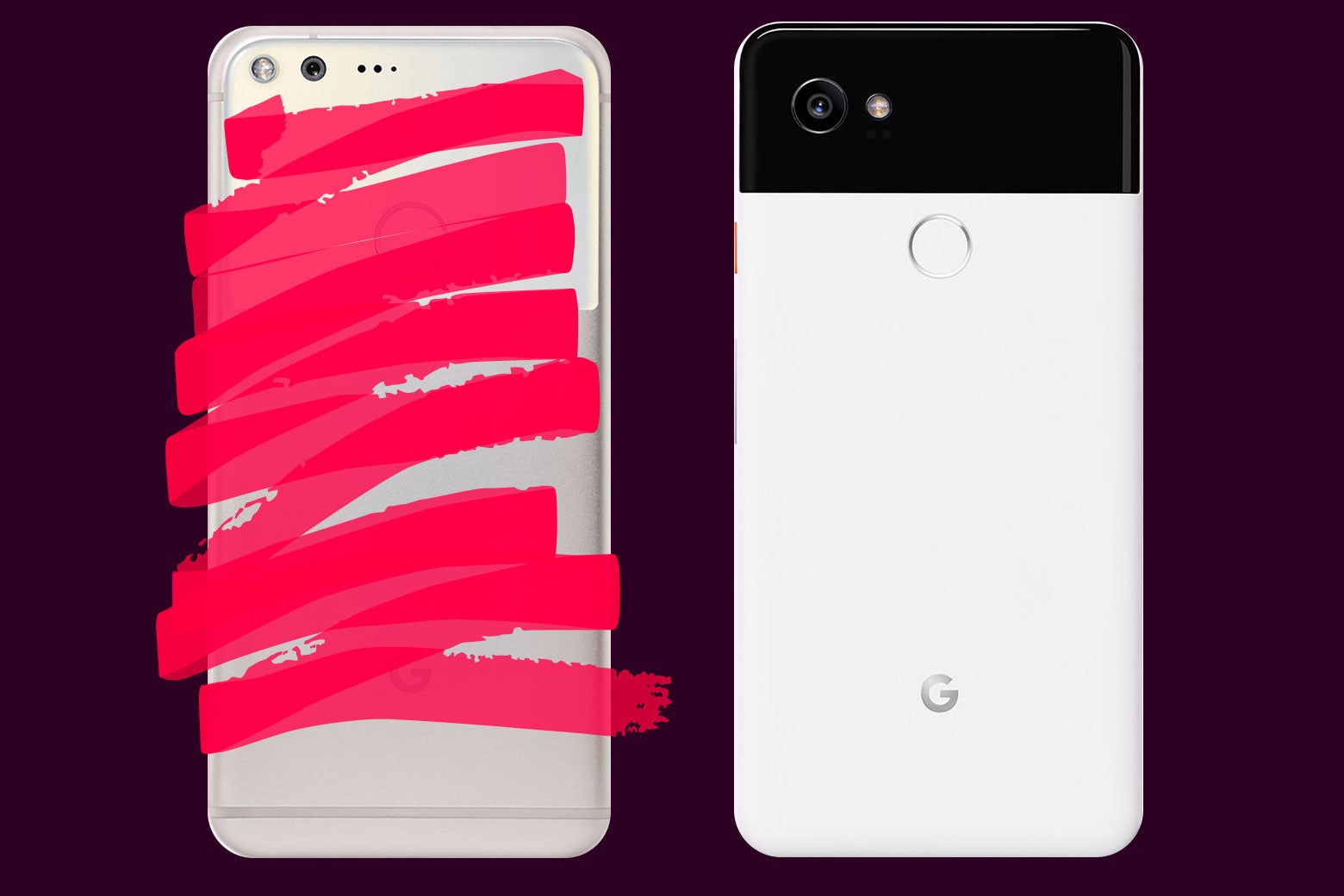After less than two years, Google is abandoning its flagship handset—the first generation Pixel. Ars Technica discovered Wednesday that Google had pulled the Pixel and Pixel XL from its website. A quick read of headlines, and you might believe Google was abandoning the Pixel brand altogether, but that’s not the case. While the original 2016-era Pixel has been removed from both the Google Store and Project Fi Store, the 2017 Pixel 2 and Pixel XL 2 remain available. Still, for those used to the lengthy availability of older smartphones from competitors such as Apple, the move seems unusual. It’s a good reminder that despite parallels in their product offerings, Google is not Apple.
When Apple launches a new phone, its standard practice is to keep the past year’s model available at a discounted price (usually $100 cheaper), a strategy Google used when the Pixel 2 launched. Apple also lowers the price of the older phone’s predecessor, keeping three generations of phones on sale simultaneously. Part of the reason Apple can do this is its cost-effective supply chain. For several years, Apple has been ranked as having the best supply chain in the world, primarily because of the way it efficiently handles its massive inventory and tightly ties production volumes with demand, preventing unsold supply from sitting in storage.
It’s a remarkable feat, and something most tech companies aren’t capable of accomplishing. Google, for example, had a hard time meeting demand when the Pixel went on sale in 2016—and for five months after its launch. Now, at the end of its life, without such supply-chain logistics in place, Google may have found that its original Pixel handsets were costing the company more money than they were making from their sales—and so it stopped production on the phones and removed them from its website. From a supply-and-profit perspective, the move makes sense.
However, there are aspects of the situation that are befuddling, such as Google’s proposed support life for the Pixel. In its online support documentation, Google says that it will cease supporting the Pixel with updates in October 2019—a mere three years after its debut—and that it can’t guarantee Android version updates after this October. Apple, by comparison, still offers support of the iPhone 5s and as Gizmodo notes, that phone is now five years old. The support issue makes it more evident why Android still suffers from significant fragmentation issues. Currently, only 1 percent of Android device owners are on the latest version of the operating system, Oreo. A majority of users are split three ways on older Android OS versions Nougat, Marshmallow, and Lollipop, while nearly 20 percent of Android users are on OS versions even older than that. By contrast, more than 83 percent of iOS device-owners are running iOS 11, the latest iteration of Apple’s mobile operating system.
This decision raises important questions about security. While Google has stepped up efforts to combat bad actors in its app store, nasty malware continues to crop up in the Google Play Store on a regular basis. Other threats, like January’s Spectre and Meltdown vulnerabilities, are discovered and need to be addressed via software patch in order to protect handset owners from seeing their personal data leaked or stolen. Many Android phones older than two or three generations were not eligible for updated protections against Spectre and Meltdown. On the other hand, limiting device updates beyond a few years protects against the issues Apple has recently experienced, including its controversy-causing need to slow down older handsets so they can run newer OS versions without crashing.
In removing the original Pixel from its website, Google is keeping its focus on the future. Android fans and converts hoping to get on the Pixel train still can—just with the most recent versions, the Pixel 2 and Pixel XL 2. And it’s likely that we’ll see a Pixel 3 added to Google’s smartphone lineup in October. Google is not an experienced hardware magnate like Apple; it can’t keep years of product models in stock—it has problems keeping its current model adequately stocked. Unlike Apple, which aims to bring old handsets up to speed with new operating system features as best as possible, Google leaves its old handsets in a time capsule of the era in which it first launched. From a user experience perspective, Google’s support decisions make some sense—but they do have the distinct tinge of planned obsolescence.
